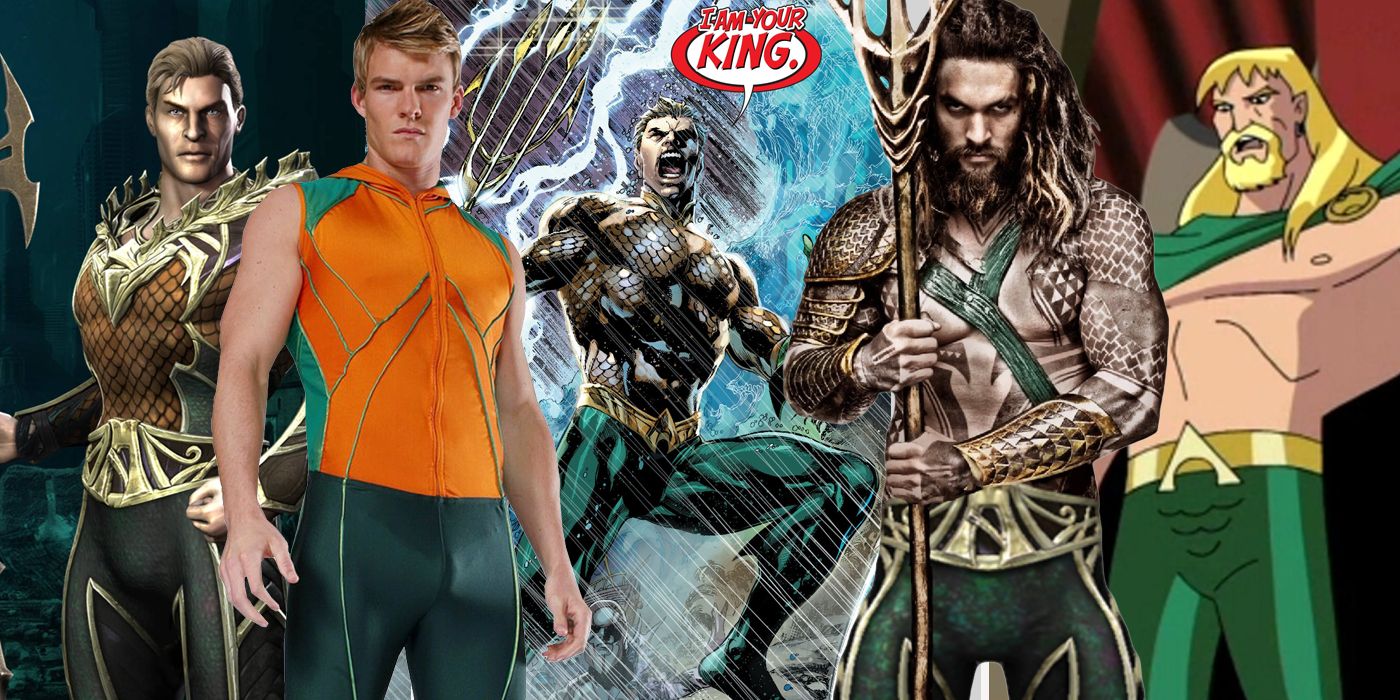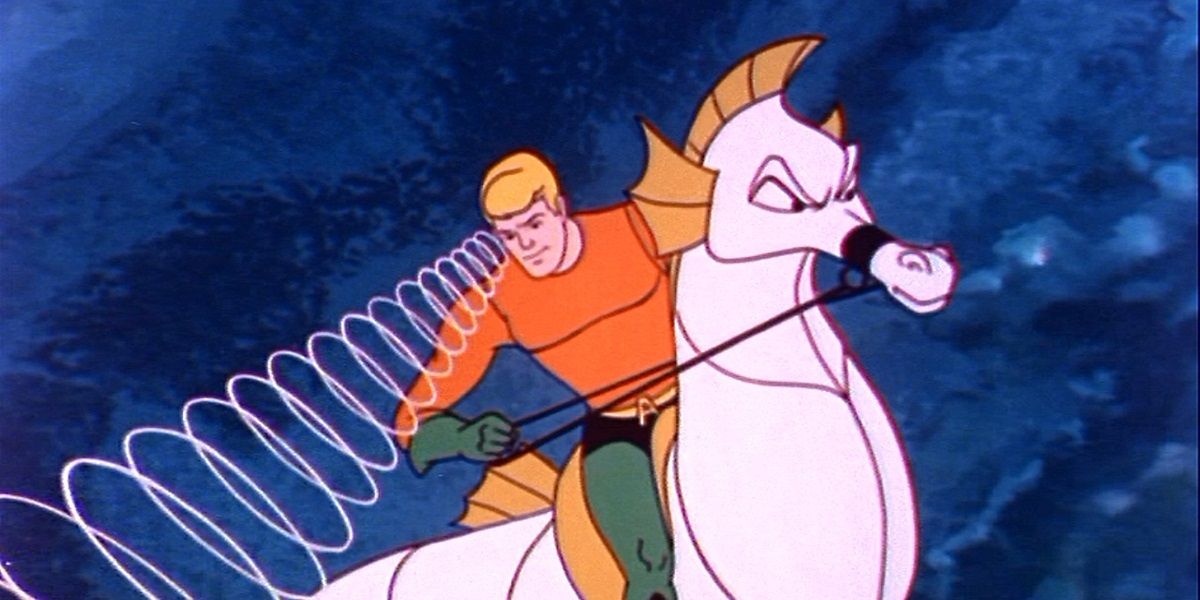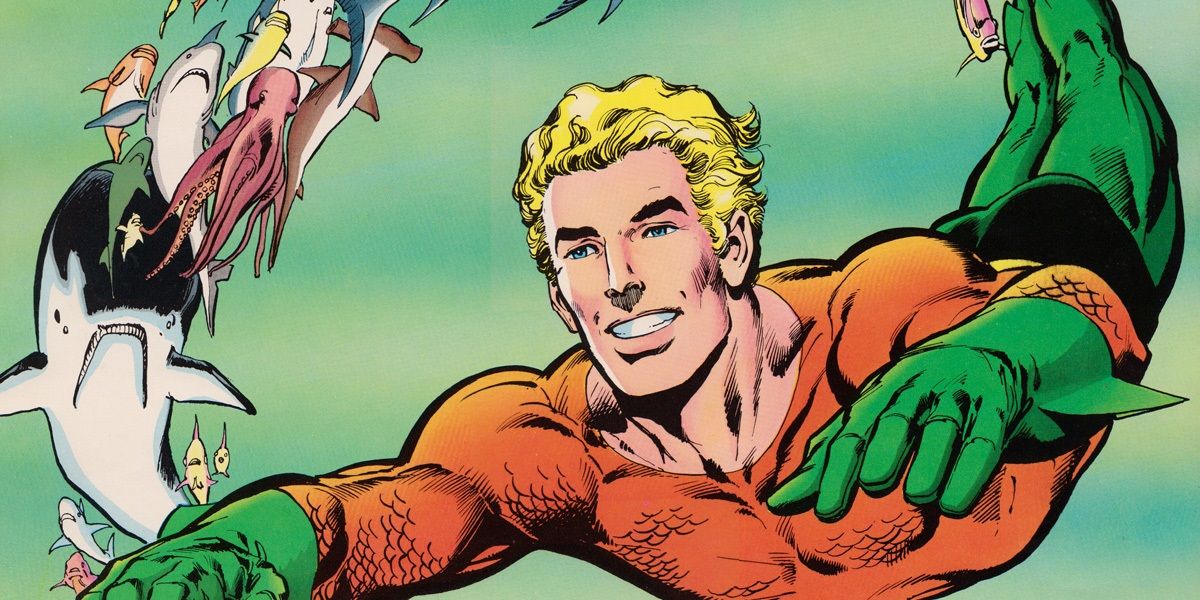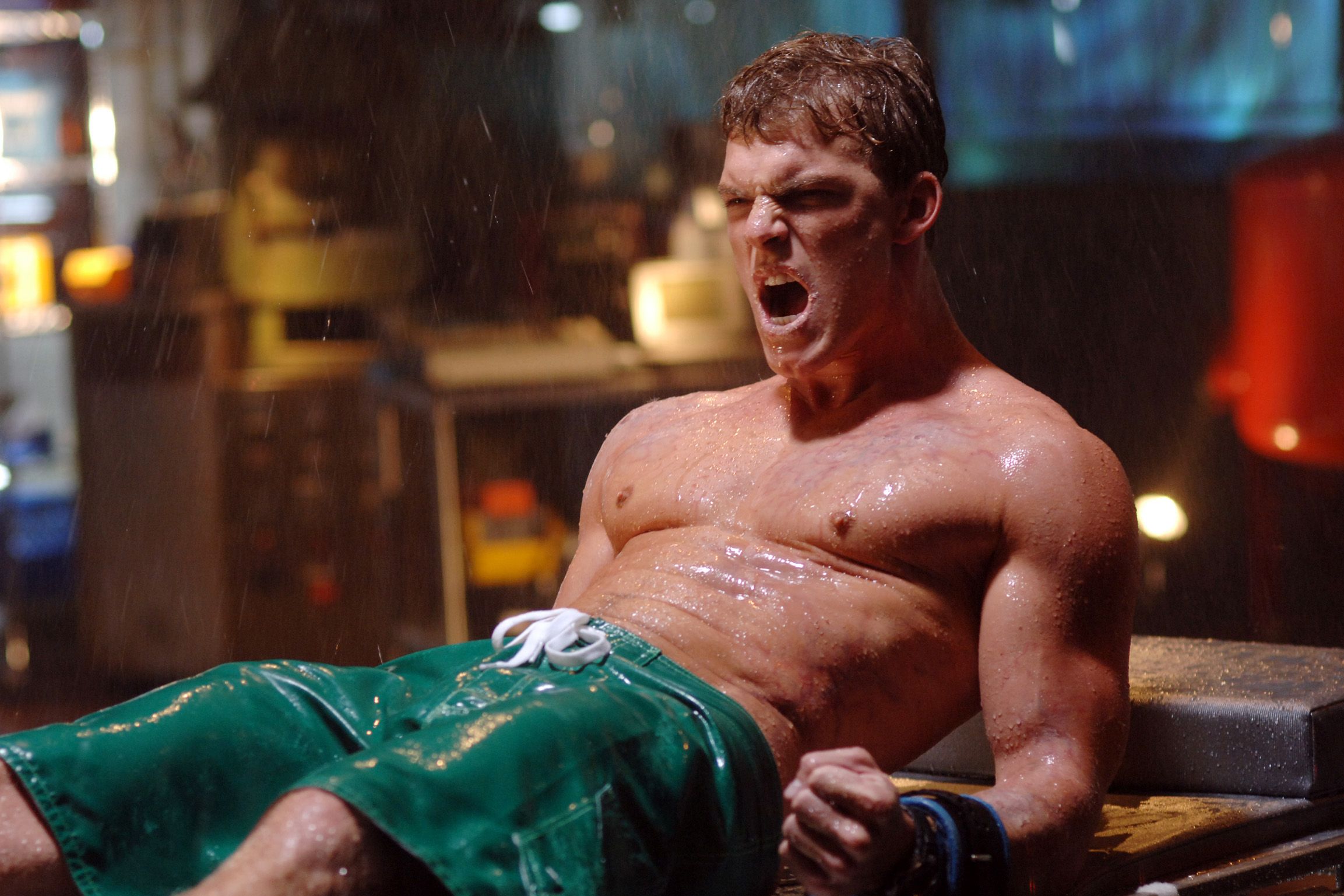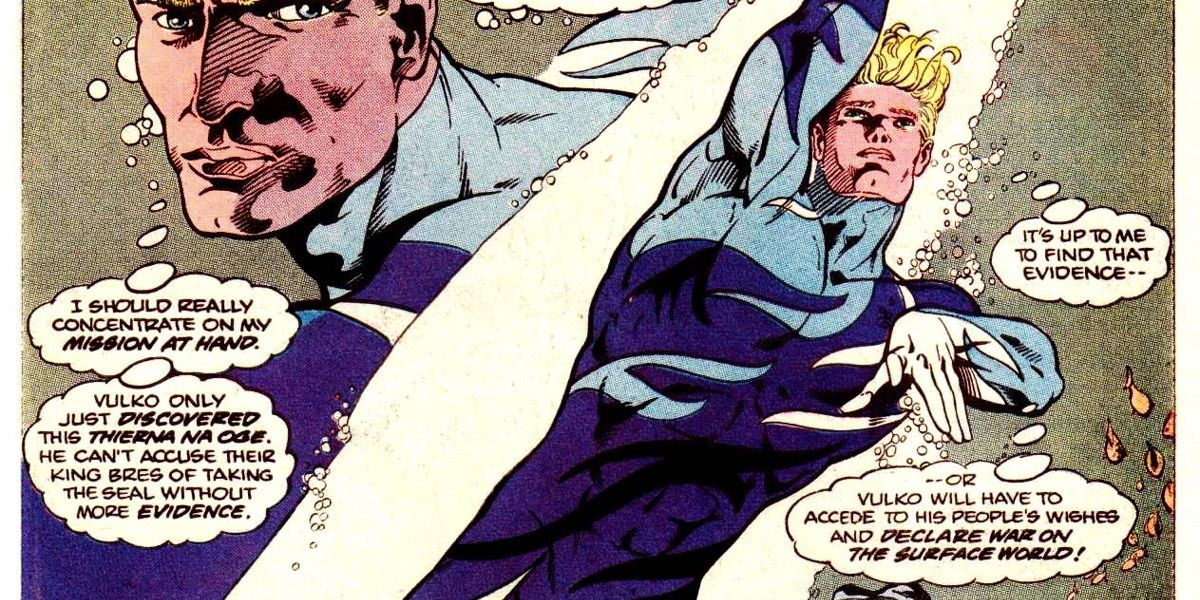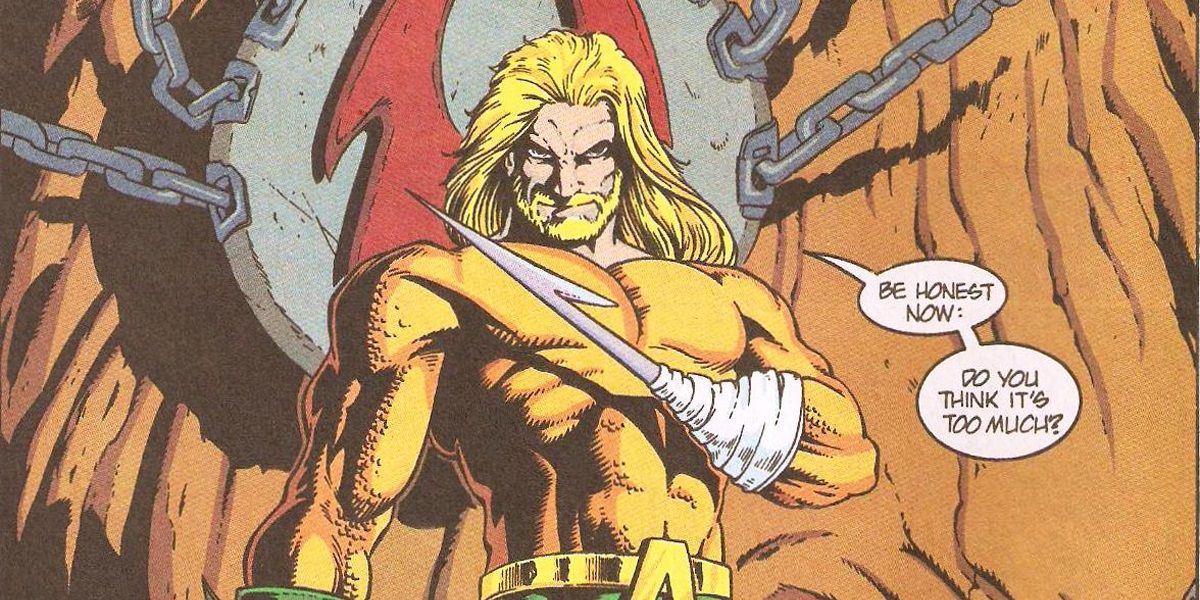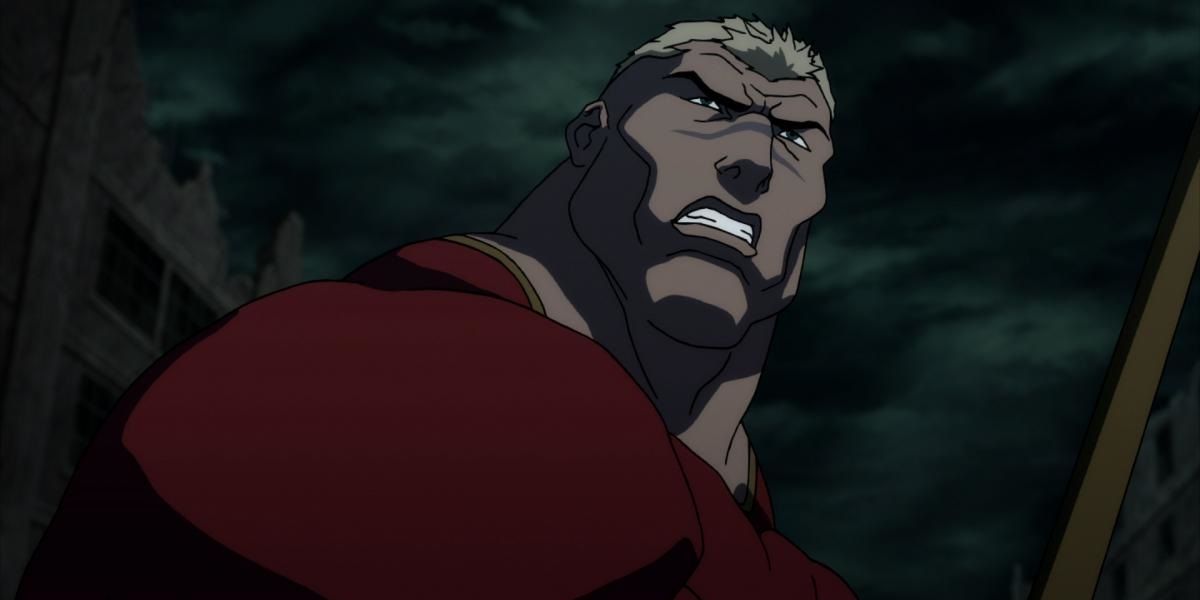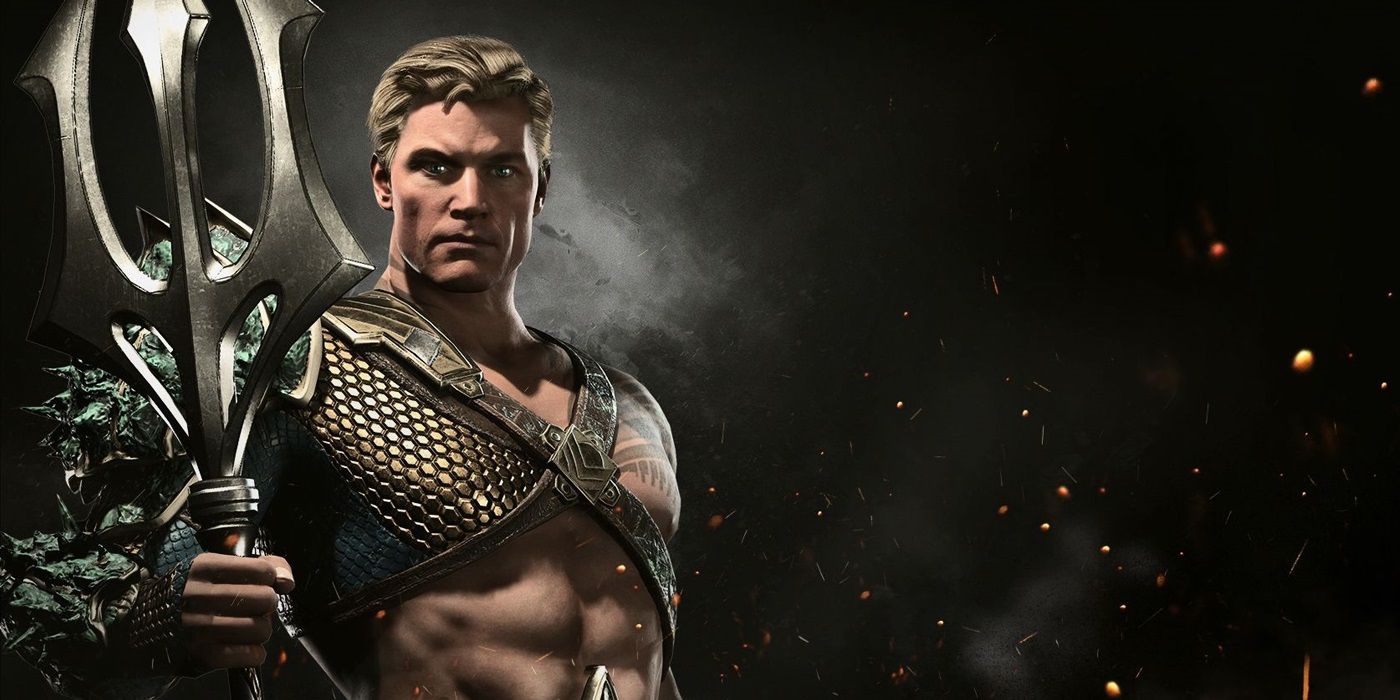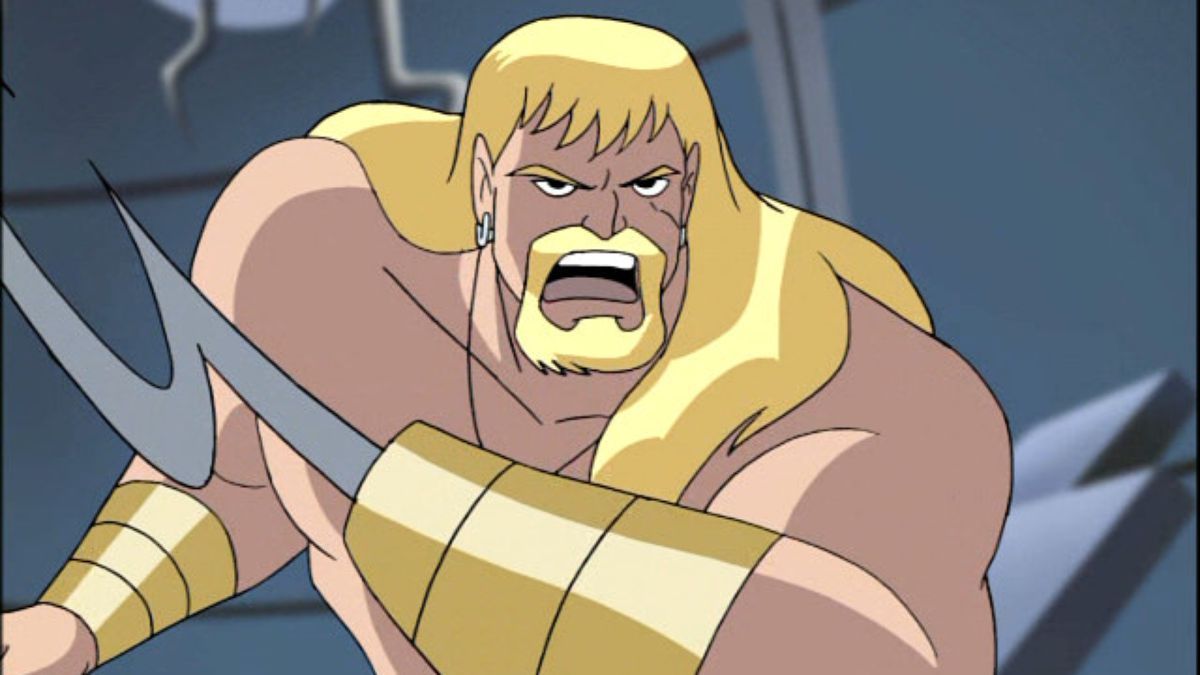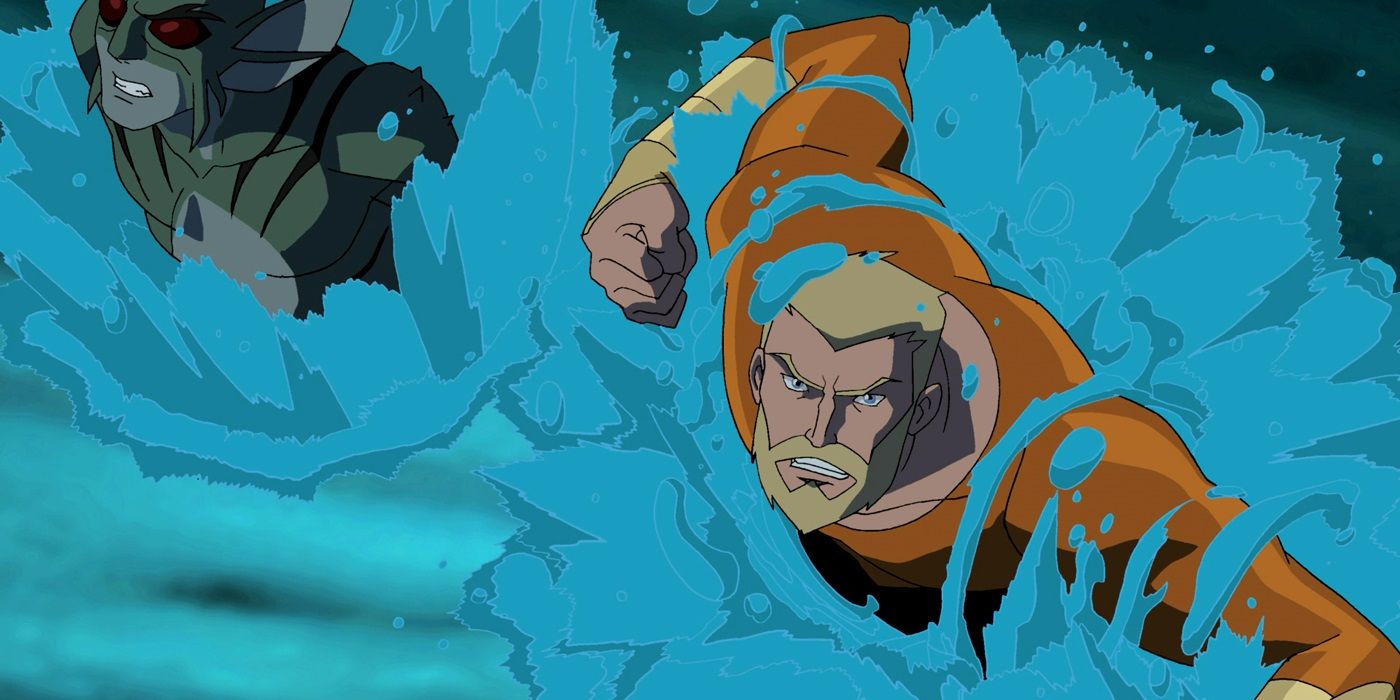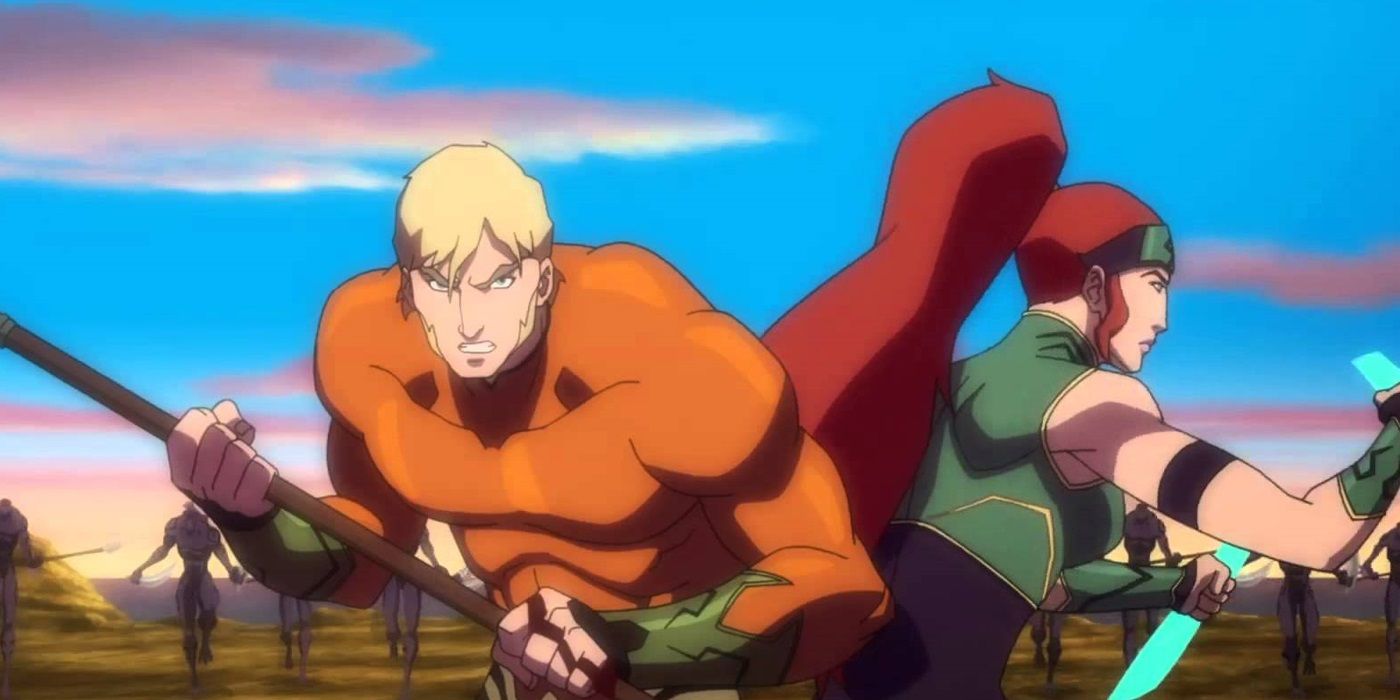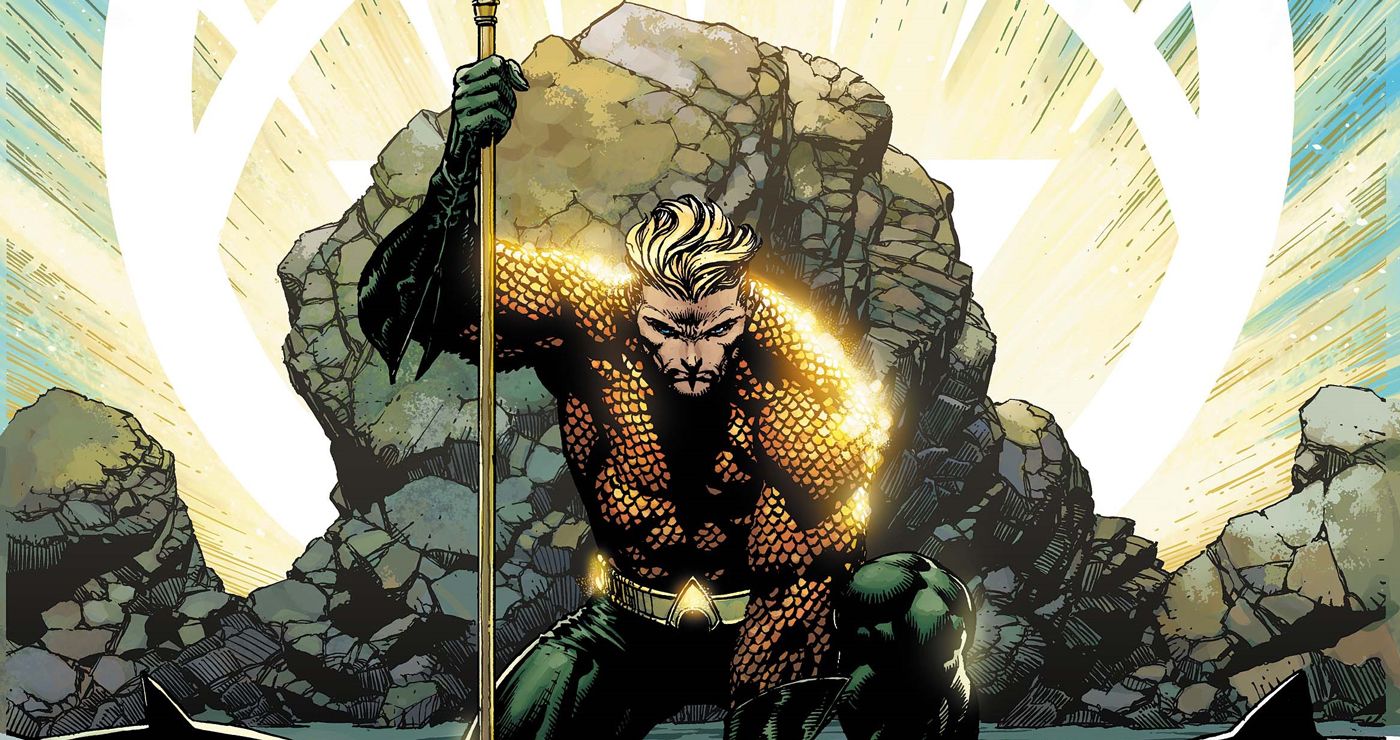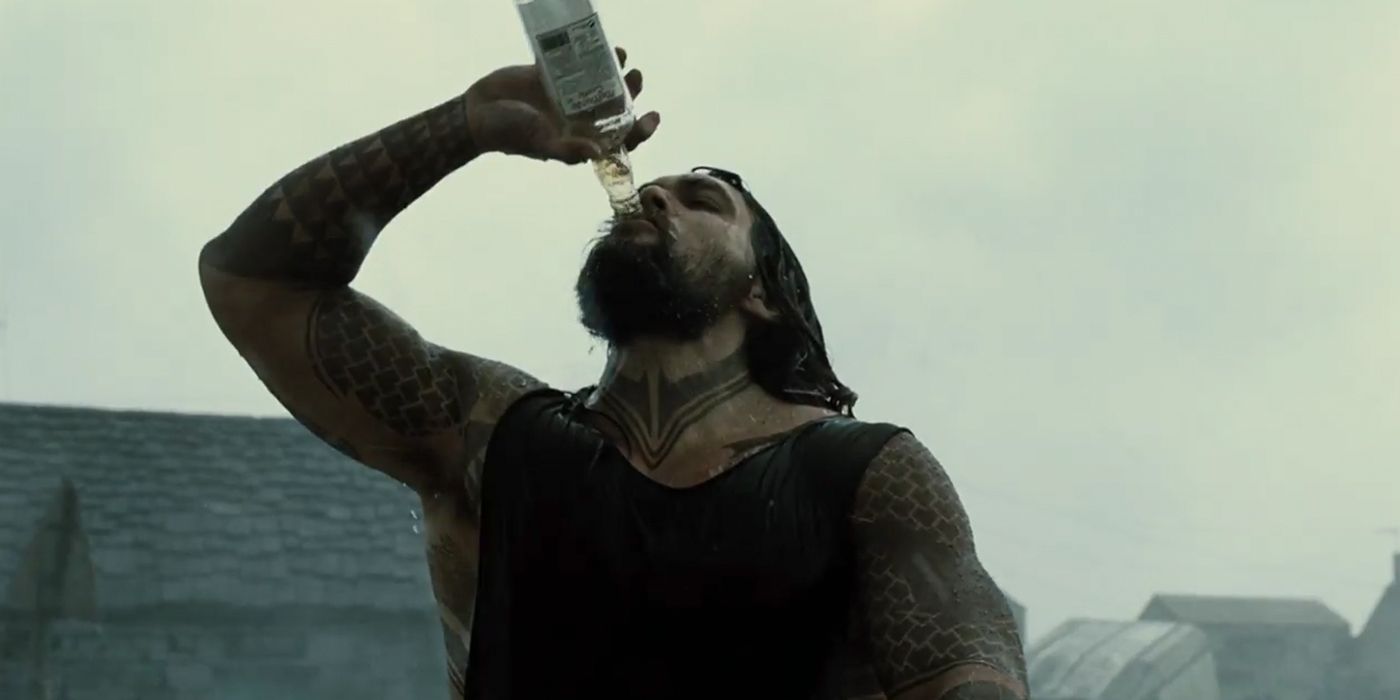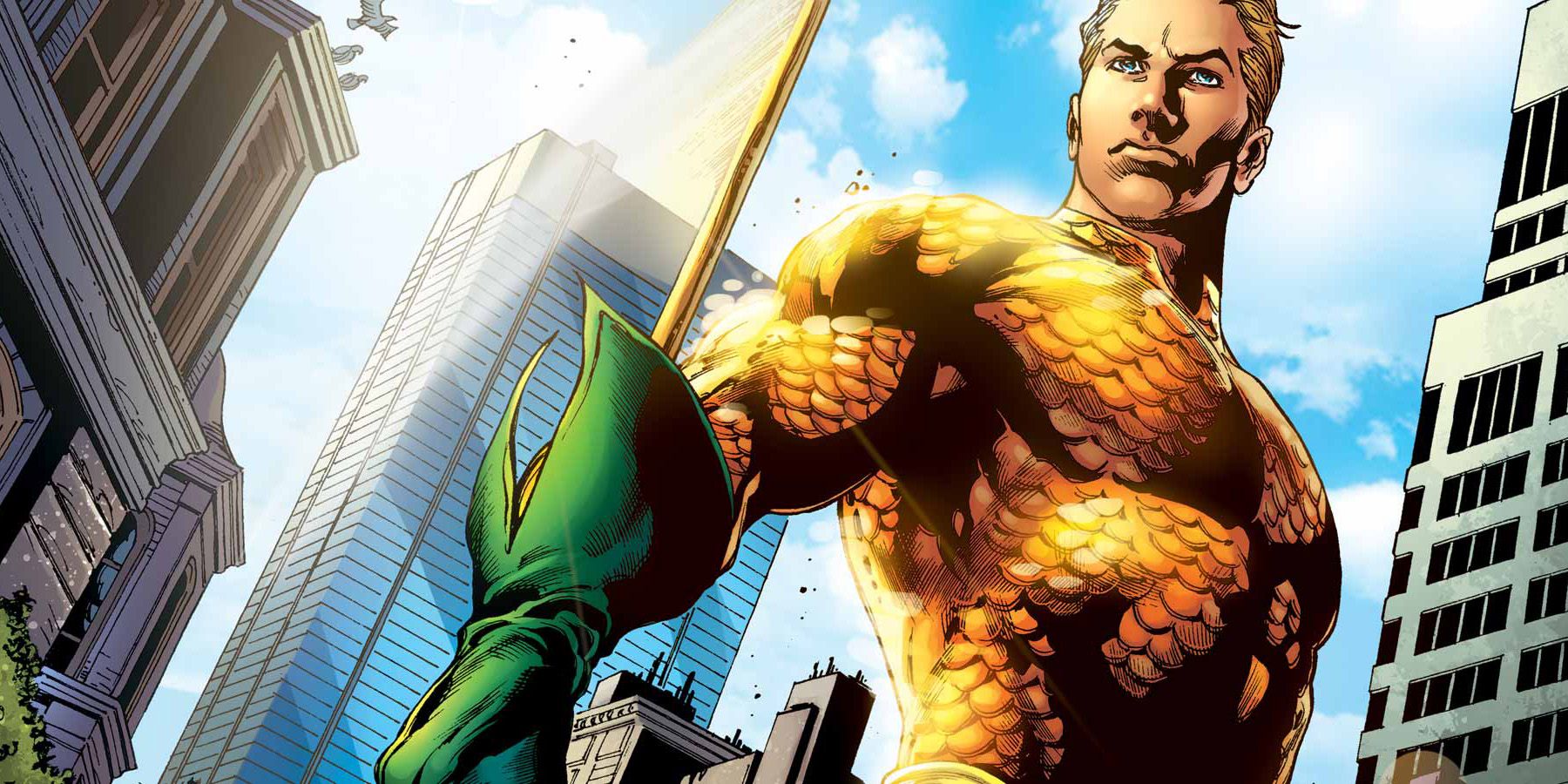Aquaman has long been an important and powerful figure in DC Comics. Despite the impressive amount of feats on his resumé, including being super strong, reigning over an entire kingdom, and having countless lives saved (at least within in the pages of the comics), Arthur Curry has been the butt of all the superhero jokes for decades.
It's an impression that slowly and surely has started to change, a big factor of which is the DCEU, Justice League and Jason Momoa taking over the role. Still, there is a long history of the king of the seven seas getting short-shifted in how he is portrayed.
Some deep diving was needed to be done here (pun very much intended) but the truth is that there have been multiple takes on Aquaman, on page, screen, and otherwise, before his big debut live-action cinema debut in Justice League.
All are a part of the character's history and help make him into what he is today, which is a near icon. Yet not every adaption of Aquaman is created equal.
Some have emphasized his goofy, playful side to embarrassing degree. Whilst others have tried to course correct away from the silly versions with disastrously depressing results. Although a select few have found just the right balance.
In any case, here is Every Version Of Aquaman, Ranked From Worst To Best.
17. Super Friends
Super Friends is a perfect product of its time. It's exactly as cheap, underwhelming, and cheesy as would be expected from its time and budget. There’s nothing complex or even that clever about it-- it’s simple and disposal kiddie entertainment. Yet, for whatever reason, it’s this 1970s cartoon that has created one of the most damaging versions of Aquaman.
Super Friends might be influential to the character but in all the wrong ways. Aquaman is a complete idiot in the series, being solely defined by ridiculous powers and lack of nearly all common sense. Aquaman is incredibly and painfully over-the-top. While it fits the tone of the cartoon, it’s a dreadful version of the character.
Super Friends is a cheesy mess but Aquaman, in particular, is so bad that he's sure to set off any lactose-intolerant viewer, no matter how casually they may be watching him.
16. Golden Age
Thankfully for comic fans (and Arthur Curry) Aquaman has only improved, by and large, since his first appearances, which began in the 1940s. While, obviously, Super Friends premiered after the character made his debut in the early days of comic books, otherwise known as the “Golden Age," the show did take the worst elements of the Golden Age and expand on them.
The Golden Age Aquaman is entirely unremarkable. The main powers of the hero in his early days were breathing underwater and being able to talk (or control) aquatic life for a minute.
That's literally all there was to him. Everything else about Aquaman was equally as small scale and boring. Still like every other comic hero of the time, Aquaman found the time to fight the Nazis in the pages of his books. Although each adventure was, of course, ocean-based.
The Golden Age Aquaman is the barebones of the character both in creativity and content.
15. Silver Age
In the next era of comic books, The Silver Age, Aquaman began to take shape into a much more recognizable and interesting character. It’s at this point in the character’s history where his royal and Atlantean heritage was established, whereas before he was just a guy who liked to swim.
The Silver Age Aquaman received the most common origin story for the character, Arthur (originally named Orin) was the son of lighthouse owner Tom Curry and Queen Atlanna of Atlantis.
Aquaman’s powers got beefed as well in addition to his mythology. He became much more powerful, adept and could even communicate with aquatic life for more than sixty seconds.
The Silver Age Aquaman is still pretty limited in scope. Nothing too ambitious or remarkable happens to Arthur Curry between the 1950s and 1970s.
However, a bunch of groundwork was laid for future and its much more dynamic stories. The Silver Age added several important motifs and elements to Aquaman’s legacy but it wouldn’t be until later versions that they were used to their fullest extent.
14. Smallville
Smallville really is a series that is either loved or hated by fans. However, it’s still widely agreed upon that the show’s version of Aquaman, who frustratingly went by the “super cool” nickname AC, was a pretty big disappointment.
The one thing that can be said of Smallville’s Aquaman is that the show did a reasonable job making him a powerhouse. AC was a contemporary and equal to Clark Kent and that’s how Aquaman should be portrayed. However, everything else about the character was rather underwhelming.
AC was little more than aquatic meathead on Smallville from his first appearance in season 5, all the way to season 10. While the show did end with Aquaman discovering and claiming his throne in Atlantis and marrying his queen Mera, Smallville never shook the impression of AC as a frat boy who could breathe underwater.
13. Post-Crisis
Following one of DC’s first major reboot events Crisis on Infinite Earths, Aquaman received an update to his origins and powers. The Post-Crisis Aquaman was given an atrociously awful suit and new (strange) backstory but for the most part was rather inoffensive.
Rather than being the biological son of a human and an Atlantean Queen, the Post-Crisis Aquaman was the son of the queen and a Atlantean wizard. It’s a parentage he shared, at least partially, with the character who’d become his arch-nemesis Ocean Master.
Perhaps the most important part of the Post-Crisis Aquaman though is that there were strides taken to establish him as an outsider but in a very relatable and sympathetic way.
The Post-Crisis Aquaman was the first version of the character to have feet in two different worlds but feel like he didn’t belong in either, which is one of the character’s most endearing qualities.
12. The '90s Reboot
At nearly epidemic levels, an insidious “disease” seemed to affect nearly all superheroes in the 1990s. Suddenly (and inexplicably), whether they were from Marvel or DC, several heroes became much grittier, darker ,and more-- for lack of a better word-- extreme. Aquaman was no different.
While the Post-Crisis Aquaman had positive qualities, he wasn’t exactly popular. So quickly after he was introduced, DC decided to completely restructure the character and the long-haired, shaggy and harpoon hand Aquaman of the '90s was born.
There were a few decent elements to the '90s Aquaman. This Arthur Curry couldn’t have been more different than the goofy Super Friends version. However, it was too much of an overcorrection.
The '90s Aquaman was relentlessly aggressive and often literally insane. His infamous hook hand rather than make him seem cool and edgy just felt misguided and desperate.
11. Arthur Joseph Curry
The '90s Aquaman lasted a reasonably long time but thankfully it didn’t go long enough to become the most influential version of the character. In fact, in the next adaptation, DC tried to move away from their intense Aquaman altogether and settled on a version that was decidedly mixed.
The '90s Aquaman mysteriously disappeared (later to be killed off) and was replaced by his (adoptive) father’s grand-nephew, Arthur Joseph Curry. The origin and adventures of Arthur Joseph Curry are incredibly confusing, especially once it’s considered that the original Aquaman had a son named A.J.
However, Arthur Joseph Curry did manage to do some course correction for the character. The new Aquaman was neither as intensely brooding as the version that had immediately preceded him but also wasn’t an aquatic punchline.
Arthur Joseph Curry is an awkward and strange time for the character but an important transitory one. He helps bridge the character's two extremes even if he's entirely successful on his own.
10. Flashpoint
Like any character in DC Comics, there have been versions of Aquaman from different Earths introduced throughout the years. Yet it’s the version from the Flashpoint, the universe that The Flash created when he tried to save his mother from being killed, that has somehow ended up sticking around for more than flash in the pan (pun, again, very much intended).
The Flashpoint Aquaman is not a hero, not by most definitions of the word. The Flashpoint Aquaman has plunged his world into chaos after engaging in a war with the Flashpoint Wonder Woman. He's a warlord but a very interesting one.
The Flashpoint Aquaman is a brutal and violent king but since he’s very much intended as an alternate version of the character that ends up making him more interesting than he would be otherwise.
This version of Aquaman is one that was raised entirely by Atlantis and has no human connection. This twist on the character’s story ends up taking him from a one-dimensional villain to fascinating character study of the main universe Aquaman.
9. Aquaman (2006)
The Smallville version of the character wasn’t entirely successful but it was popular enough that network The CW saw potential in creating an Aquaman series.
Shortly after Aquaman was introduced on Smallville, plans began to form to create a series entirely devoted to the character but it wouldn’t be the same Smallville version.
Rather than having Smallville's actor Alan Ritchson play the character, The CW cast Justin Hartley, who would later play Green Arrow on Smallville, in the role. The TV show never moved beyond the pilot stage but it has been released publicly and while not perfect it is an interesting take on Aquaman.
The pilot takes elements of the Smallville character but still manages to make Arthur Curry, still called AC, feel much less obnoxious. It’s not high art by any means but it’s fun look at the character with a ton of potential that doesn’t feel too shmaltzy.
8. Injustice
The Injustice series is quite a bit more than a fighting video game set in the DC Universe. While the central conceit of Injustice is having heroes (and villains) punch each other in the face, there’s also a deep lore and history connected to the games.
Injustice has introduced several alternate versions of classic DC characters, with varying degrees of success, and Aquaman’s alternate take manages to one of the better.
Aquaman is initially introduced as a member of Injustice’s (evil) Superman’s Regime, aligning his underwater kingdom with Superman’s land one. Eventually though he retreats to just command his own armies and becomes a free agent in the war between Batman and Superman.
Aquaman immediately comes off as a capable and commanding ruler in Injustice. He’s not someone to mess with and that’s underlined by his ridiculously over-the-top special moves in the game. Yet he still shows a lot more depth than some of the more aggressive Injustice versions of other DC characters.
7. Justice League Unlimited
The Justice League Unlimited version of Aquaman clearly takes a heavy bit of inspiration from the 90’s reboot. Yet despite the visual similarities, the animated version of the gritty and intense Aquaman is the superior grim adaptation.
Rather than wallowing in depression or trying desperately hard to make Aquaman seem as hardcore as possible, the JLU Aquaman simply existed. The hook hand, while present, didn’t call attention to itself and though gruff and rude, Aquaman wasn’t an insufferable pill of violence and misery.
Justice League Unlimited served as an example of how to do a tough-and-rumble Aquaman without failing. This might be the most likable version of the character.
Still, it falls directly in the middle of making Aquaman sympathetic and one of the most powerful people in the DC Universe. He's not someone you want to hang out with but he is someone you want protecting you.
6. Young Justice
Like all of DC's adult heroes, Aquaman is little more than a supporting player in Young Justice. The beloved cartoon is about the younger generation of heroes and, as such, Aquaman only features very occasionally.
Even though his protégé, Aqualad, becomes the team leader, Aquaman shows up even less than characters like Superman and Batman.
However, the briefness of Aquaman’s appearances don’t translate to a poor showing of the character. Aquaman might not be a major character in Young Justice but he still comes off as a measured, thoughtful and wise ruler. Young Justice stresses Aquaman as the king of Atlantis and does extraordinary job with it.
In his few appearances, Aquaman inspires loyalty and respect. It’s obvious that he’s incredibly important to the world and the people, without having much screentime.
5. Justice League: Throne of Atlantis
When DC decided to create an interconnected universe for its animated movies with the origin movie Justice League: War, Aquaman was absent from the forming of the super team. In Justice League: War’s sequel, however, The Throne of Atlantis, Aquaman was arguably the main character.
Taking heavy inspiration from the comic of the same name, Throne of Atlantis was not the best DC animated offering. It did, however, do a tremendous job of introducing Aquaman to the new animated universe and creating a version that was both familiar and refreshing for comic book fans.
Throne of Atlantis opens with Aquaman as a bit of loner and recluse. He’s an outsider and doesn’t know where to fit but as the movie progresses he discovers his royal destiny and begins to embrace his (impressive) slate of powers.
The latter of which culminates in Aquaman using his control over sea life to have a shark eat Black Manta. If nothing else, Throne of Atlantis was proof that Aquaman can lead a movie, not just be a supporting player.
4. Blackest Night and Brightest Day
Arthur Joseph Curry took steps in the right direction to reverse some of the grim damage done by the '90s Aquaman. Yet it wasn’t until the proper Aquaman returned in the Blackest Night / Brightest Day event that the character was properly salvaged.
In Geoff Johns' big universe spanning event, the original Aquaman was brought back to life (along with several other previously thought dead DC heroes and villains). Johns took the opportunity to cherry pick the best parts of Aquaman’s long and complicated history and outright ignore (or rewrite) the elements that didn’t work.
Aquaman’s resurrection allowed the character a second lease on life, literally, but it created was an incredibly successful retooling. There was much more exploration of Aquaman's relationship with his wife Mera and it catapulted the two into one of the best comic book romances, ever.
This Aquaman was cheerful and optimistic, but able to strike the intimating figure of powerful king at the same time.
3. Batman: The Brave and the Bold
If Justice League Unlimited is the example of how to do a proper dramatic animated Aquaman, Batman: The Brave and the Bold is an example of how to a proper comedic animated Aquaman.
Like most of the The Brave and the Bold, Aquaman is goofy and weird but it’s in a legitimately funny and clever way. None of the jokes made are at Aquaman’s expense or go for the easiest punchline imaginable.
Batman: The Brave and the Bold was crafted, clearly, for young children but there’s enough thought put in there for all ages. The portrayal of Aquaman fits that same mentality. He’s a comic relief character but there’s an effort made to always respect and honor his history.
There’s a way to have a funny and lovable Aquaman that doesn’t turn the character himself into a complete joke. Batman: The Brave and the Bold is, perhaps, the best example of that fact.
2. Justice League (2017)
When Jason Momoa’s Aquaman was first revealed, there was more than a bit of uproar as fans were worried he’d be nothing more than Khal Drogo in the water. Yet, with the release of Justice League, it’s clear that Momoa has brought something new, fresh, and incredibly exciting to the iconic character.
Justice League’s version of Aquaman feels like an amalgamation of Arthur's long history. There are elements of nearly every era of Aquaman and previous adaption in Justice League but they all meld into one dynamic and interesting character.
Justice League’s Aquaman is funny but still has an edge to him. He’s powerful but still has some very compelling vulnerabilities about him. Most importantly, though, Momoa’s Aquaman is just fun.
He looks like this intense killer but there’s always this underlying feeling that he could be your best friend… who owns a deadly quindent.
1. New 52 / Rebirth
No matter how fun or interesting Momoa’s adaptation or any future versions of Aquaman are, they're always going to live in the shadow of the comics. Aquaman’s home medium is still his best and that’s the truth for most superheroes. There’s no better comic version of Aquaman than the one Geoff Johns wrote during the New 52 reboot of DC.
While most of the New 52 reset was received poorly by fans, Johns’ work on Aquaman (and other series) is a huge bright spot. Johns took everything he was doing with the character on Blackest Night / Brightest Day and continued to expand on it.
The New 52 (and everything that has followed it) has taken all the jokes about Aquaman and tackled them head on. There’s an incredibly satisfying sense of self-awareness to the current iteration of Arthur Curry that makes him hilarious and relatable.
Yet there’s still an effort to take the character, his life and responsibilities seriously. Aquaman can be fun and goofy but he can also serious and emotional. No adaption has found balancing all those better than the version in the comics that began with Johns' run.
---
Do you agree with these rankings? Who are your favorite and least favorite versions of Aquaman? Sound off in the comments!

